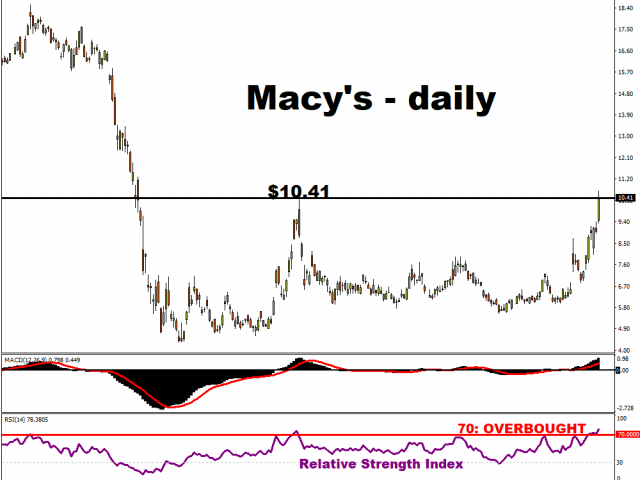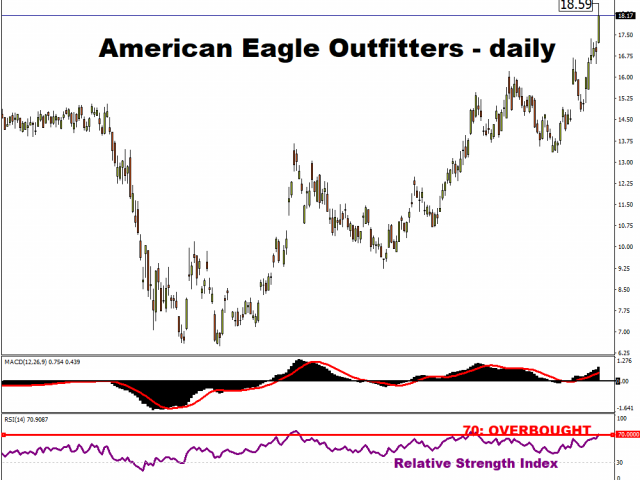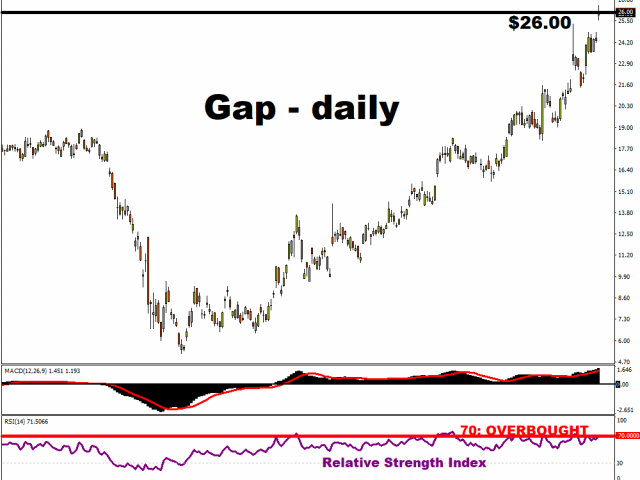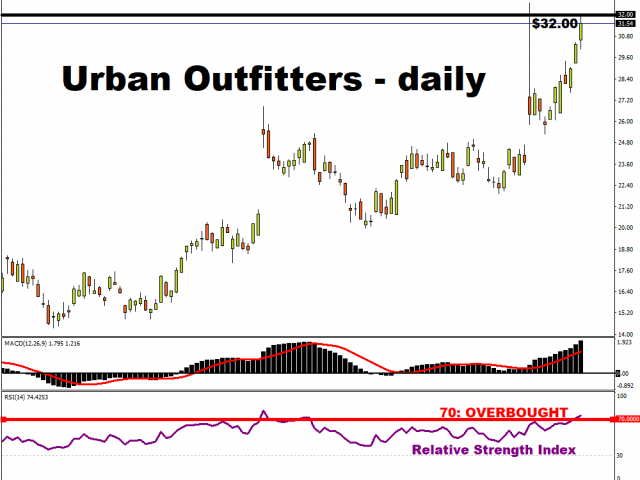By Han Tan, Market Analyst, ForexTime
With Black Friday just around the corner, the traditional start of the US holiday shopping season is about to kick off. Typically, Black Friday sales are accompanied by scenes of bargain-hunters camping outside popular retail outlets, braving the cold, only to bum-rush the store once it’s open. Sometimes, overly eager shoppers literally bust down doors and even get into fist fights over the best deals.
This year, things are set to be very different, due to the Covid-19 resurgence across America.
Instead of the usual frenzy at the physical stores, the stampede for bargains has been more apparent in the stock markets. Investors have made a beeline towards retail companies that had been beaten down by the pandemic, as they price in a return to in-person shopping, enabled by a Covid-19 vaccine.
Such hopes sent stocks in mall-based retailers surging on Monday:
- Macy’s soared 15 percent (month-to-date gains: 67.63 percent). Macy’s last week reported a better-than-expected Q3 performance.
- American Eagle Outfitters jumped 7.32 percent (month-to-date gains: 32.6 percent). The company is set to release its Q3 earnings after US markets close on Tuesday.
- Gap advanced 6.93 percent (month-to-date gains: 33.98 percent). Gap is also set to unveil its quarterly results after US markets close on November 24th.
- Urban Outfitters climbed 4.44 percent (month-to-date gains: 41.72 percent), before announcing after markets closed on Monday that its Q3 earnings-per-share exceeded estimates.
Overall, the S&P 1500 Apparel Retail Index has surged by nearly 86 percent since its March low, and is now a mere 2.14 percent away from its highest ever closing price, posted on February 20th this year. Still with the stocks of many of these so-called “nonessential retailers” now reaching overbought territory, perhaps a pullback can be expected in the near-term.
This wave of optimism has been fanned by a report from the National Retail Federation, which expects US holiday sales to post a 3.6 to 5.2 percent growth compared to 2019’s US$729.1 billion that was spent during the year-end shopping season. The industry’s leading trade group expects a “strong finish” to what has been a tumultuous 2020, given that Americans who were not able to spend on other items such as vacations and in-person entertainment (sporting events, movies, etc.) will instead pour between US$755.3 billion to US$766.7 billion into their year-end shopping spree. Such an outlook augurs well for the overall US retail sales figure, which could only muster a mere 0.3 percent growth in October compared to the month prior.
However, execution risks remain. It remains to be seen how well these retailers can handle the incoming swarm of orders, be it for curbside pickup or direct shipping. Amazon has already braced itself by hiring over 25,000 more workers for its warehouses this year, while adding an extra 100,000 seasonal workers to handle the expected tsunami of online orders.
And the expected rebound in footfall isn’t assured. The pandemic may have left longer-lasting scars, potentially enforcing a lasting shift in shopping habits. Consumers may feel a lot more reluctant to return to in-person shopping and may have grown accustomed to buying items online. And with a spate of job losses in the US economy, with weekly jobless claims still over three times more than pre-pandemic levels while the unemployment rate remains close to seven percent, American consumers’ purchasing power may need more time to recover.
Still, a fresh round of US fiscal stimulus by the incoming Biden administration could help dampen some of these downside risks on US retail activity. Otherwise, once the year-end shopping bonanza fades away, these retailers might have been to brave a long, cold winter before they can welcome warm bodies back into their stores once more, to justify the eye-popping gains in their shares of late.
Disclaimer: The content in this article comprises personal opinions and should not be construed as containing personal and/or other investment advice and/or an offer of and/or solicitation for any transactions in financial instruments and/or a guarantee and/or prediction of future performance. ForexTime (FXTM), its affiliates, agents, directors, officers or employees do not guarantee the accuracy, validity, timeliness or completeness, of any information or data made available and assume no liability as to any loss arising from any investment based on the same.
 Article by ForexTime
Article by ForexTime
ForexTime Ltd (FXTM) is an award winning international online forex broker regulated by CySEC 185/12 www.forextime.com




